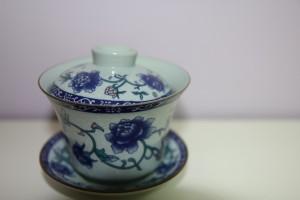Or in local speak- Ang moh tea and Chinese tea. We’ve heard these phrases all the time- ‘Chinese tea’ and ‘English tea’, but what is the difference between Chinese and English Tea?
 Is it a particular category of tea?
Is it a particular category of tea?
In general English tea refers to black tea. By and large though, the Western worlds these days have been exposed to an increasingly wider variety of tea such as green, white and oolong tea.
In addition, black tea is but one of the 6 categories of tea produced and consumed in China. Basically all 6 categories of tea- green, white, yellow, Oolong, black and dark tea originated from China and continue to be produced and consumed in China.
While the Chinese have more choices, black tea continues to be consumed at least in part in China, particularly in Anhui and the Southern parts of China and the English consume more than just black tea these days.
Is it Geography?
Does the geographical region where the tea was harvested give it its identity in this context?
That being the case, it would be straightforward for Chinese tea- tea grown in China. Taiwan too, not because of political reasons but the processing method is largely the same and for most parts the teas are indistinguishable from each other, except by connoisseurs.
Then, apart from some recent experiments, there are no tea farms in Britain. You could put forth the case for English tea as those being grown in former British colonies- India, Sri Lanka (formerly known as Ceylon) and Kenya, to name the Big 3.
However, that is not altogether correct because teas such as the Fujian grown Zhengshan Xiaozhong which has been Anglicized as ‘Lapsang Souchong’ is a historical favorite of the British and one of the original principal components of English Breakfast tea is Anhui Province’s Qimen Hongcha or other better known by its Anglicized name of Keemun.
How about the type of plant grown?
Broken down to the most rudimentary and simplistic way of looking of it at teas come from the same plant- the Camellia Sinensis plant. Of course all dogs come from the canine lupus familiaris but our naked eye can tell us the difference between the breeds of dogs. But this is best left for a post of its own.
Then there are 2 main sub-breeds of the Camellia Sinensis- Camellia Sinensis sinensis and Camellia Sinensis Assamica, the former of which originates in China while the latter was named after Assam in India.
Camellia Sinensis Sinensis sub-breed is commonly grown in Darjeeling, Ceylon and Kenya while the Assamica sub-breed is grown in Assam. However, the Assamica sub-breed is also native to Yunnan province from which many Chinese teas such as Dian Hong and Pu-er are grown.
 So is it the way it is being consumed?
So is it the way it is being consumed?

Generally speaking, Chinese consume their teas straight up, without adding milk or sugar but this is a very general statement. Beijing tea culture is markedly different from Guangzhou tea culture and Chengdu tea culture. While in some parts, tea means ‘green tea in a glass’, in others it could mean ‘oolong in a Yixing pot’ or ‘scented tea in a gaiwan’.
English tea is a little more straightforward since the general imagery is a china (ironically) teapot with black tea in it, served in a cup and a saucer with milk and sugar added. But again that is overly generalizing things. With green tea making its way onto the shores of England, the traditional consumption pattern is evolving- green tea with milk surely is a bizarre notion- and the lines of English and Chinese tea are being blurred as we speak.
So is there a Conclusion?
In short, there is very little to separate a ‘Chinese tea’ from an ‘English tea’ as you could easily brew a Darjeeling in a gaiwan or a Dian Hong in a china pot with milk and sugar added to it.
Traditional differences have increasingly been blurred and black tea is neither the sole privilege of the English nor green tea or restricted to Chinese alone.
 Is it a particular category of tea?
Is it a particular category of tea?